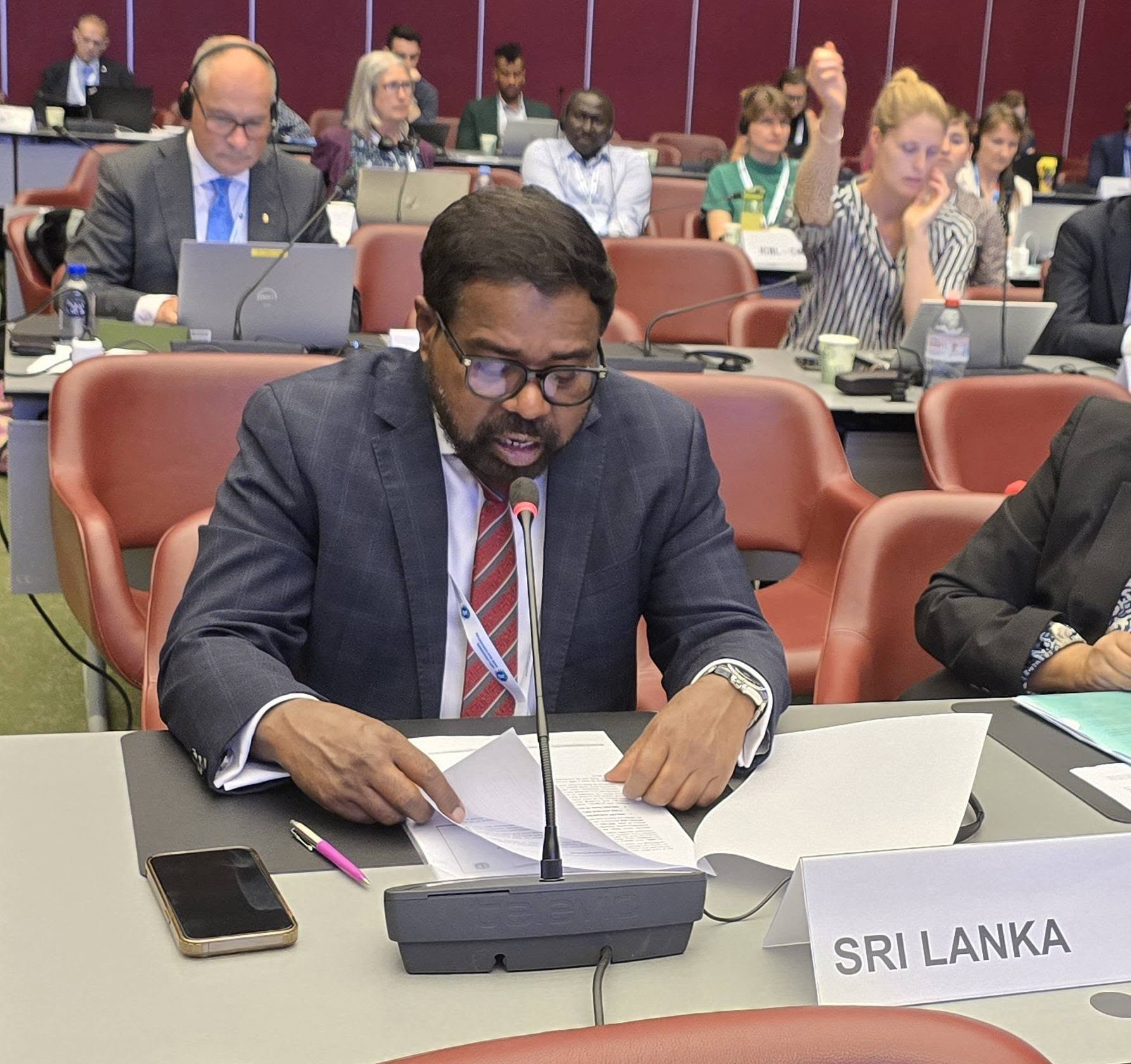
Opening and National Commitment
On behalf of the Government of Sri Lanka and the National Mine Action Centre (NMAC), I am pleased to provide an update on Sri Lanka’s progress and challenges in fulfilling its obligations under Article 5 of the Anti-Personnel Mine Ban Convention (APMBC).
Sri Lanka acceded to the APMBC in June 2018, committing to fulfil its Article 5 obligations by 1 June 2028. To guide this process, the Government launched the National Mine Action Completion Strategy 2023–2027, developed in close consultation with the Geneva International Centre for Humanitarian Demining (GICHD) and all national and international stakeholders. The strategy reflects international good practices and is designed to steer Sri Lanka toward timely, transparent, and sustainable completion.
Article 5 Implementation: Progress, Achievements, and Challenges
To operationalize the strategy, a nationwide Completion Survey was launched in mid-2023, covering all districts of the Northern and Eastern Provinces and adjoining areas. The survey has systematically assessed approximately 1,400 Grama Niladhari divisions, which are our smallest administrative boundaries.
As of June 2025, 59% of the surveyed divisions have been declared mine- and EO-free, while the remainder are undergoing follow-up visits and technical verification. During this ongoing process, Sri Lanka has identified approximately 8 square kilometres of previously unknown contamination, reinforcing the need for continuous survey and verification.
To date, 13.5 square kilometers have been released through clearance, technical survey, and cancellation since 2023, directly benefiting affected communities. These efforts have supported access to land for agriculture, housing, infrastructure development, and essential services. The IMSMA Core system, developed by GICHD, has played a central role in real-time data tracking and informed decision-making.
Overall, since 2010, Sri Lanka has released more than 254 square kilometers of confirmed hazardous areas, contributing to a total land release of 1,297 square kilometers, enabling the safe return of over 900,000 internally displaced persons and supporting the restoration of public services and economic recovery in post-conflict regions. During survey and clearance operations, Sri Lanka has found and safely destroyed a total of:
• 928,187 anti-personnel (AP) mines
• 2,256 anti-tank (AT) mines
• 380,096 items of unexploded ordnance (UXO)
Despite this progress, several challenges persist. Newly reported contamination continues to emerge, and funding shortfalls are significantly impacting the overall scale and pace of operations. As of April 2025, the programme is functioning with only 45% of the 2024 funding level, which has limited the capacity of key implementing partners—DASH, SHARP, HALO Trust, and MAG—to maintain or expand their field operations as planned. The Sri Lanka Army also contributes as a national mine action operator, with recognized capacity for clearance and survey activities. However, their operations are also constrained, as the Government of Sri Lanka supports their mine action role with only limited national funding. These combined constraints continue to pose a major challenge to meeting Article 5 obligations within the set timeframe.
Without at least a 30% increase in funding in 2025 and 2026, meeting the Article 5 deadline of June 2028 will be extremely difficult. A further reduction in funding could significantly delay progress.
Mid-Term Strategy Review and Funding Outlook
In May 2025, Sri Lanka undertook a mid-term review of its Completion Strategy, supported by GICHD. Conducted alongside a national completion survey stock-taking workshop, the review assessed ongoing progress and evaluated how different levels of funding would impact the clearance timeline.
The review concluded that achieving Article 5 completion by 2028 is technically feasible if sufficient funding and operational support are mobilized promptly. However, should current funding levels persist, operational limitations will affect the pace and scale of implementation.
These findings were presented at a high-level donor appreciation and coordination event held on 2 May 2025, attended by the Honorable Prime Minister and senior representatives from key donor governments. The event reaffirmed Sri Lanka’s national ownership and commitment to working in close partnership with the international community.
In light of the mid-term review and future funding trends, the Government of Sri Lanka will evaluate the necessity of submitting an Article 5 extension request by 2027, based on progress made and available resources.
Conclusion and Way Forward
Despite constraints, Sri Lanka’s mine action programme remains committed, data-driven, and community-centered. With the continued support of donors, implementing partners, and technical advisors, we are determined to advance our progress and ensure that no one is left behind due to the threat of landmines and explosive remnants of war.
Sri Lanka reaffirms its full commitment to the principles and obligations of the Anti-Personnel Mine Ban Convention and looks forward to continued collaboration with the Committee on Article 5 Implementation, donor states, and the broader mine action community to achieve a realistic, inclusive, and sustainable completion of its Article 5 obligations.
Thank you.
